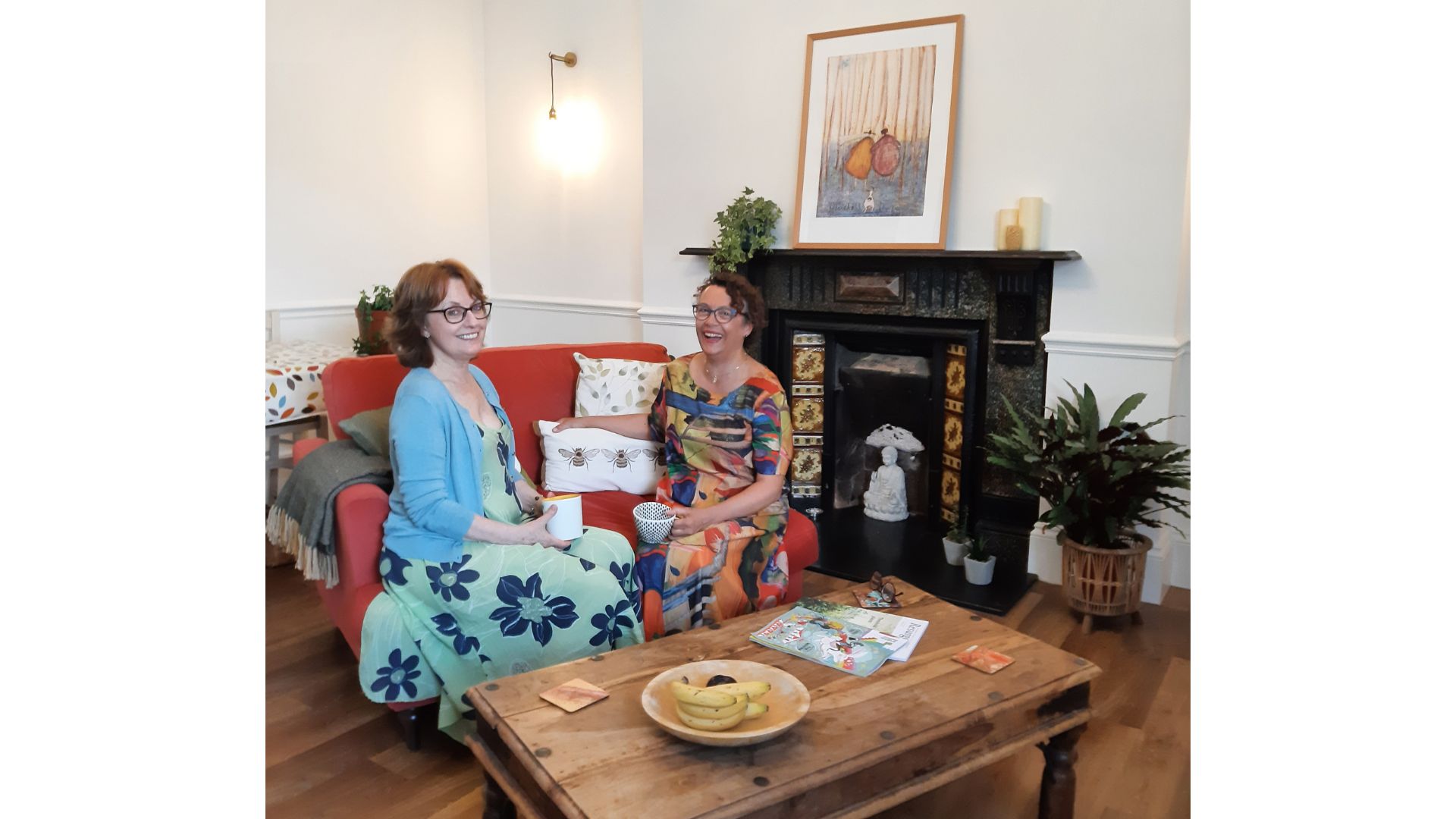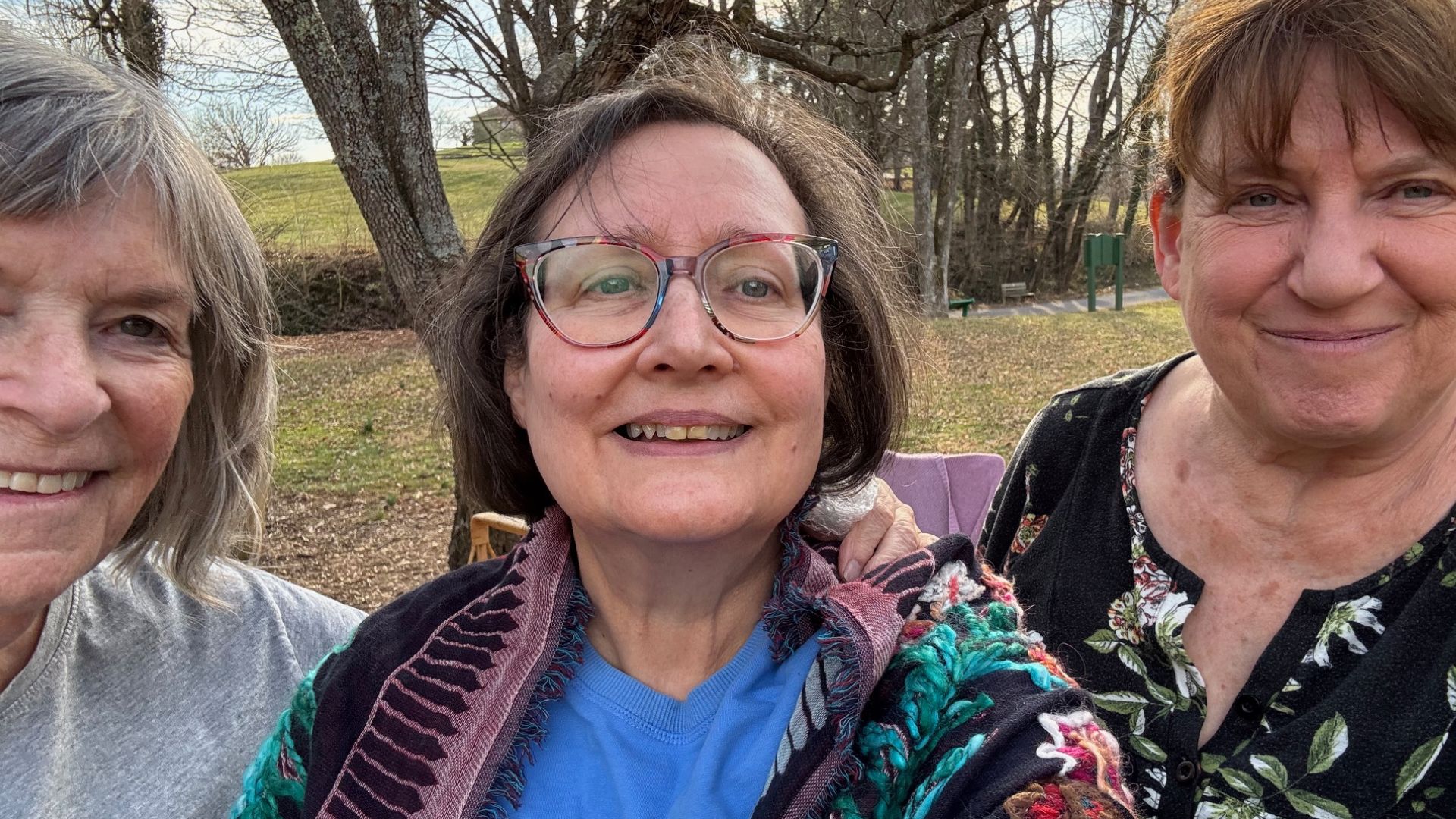In Denmark – the birthplace of modern co-housing in the 1960s – choosing to live in a community is not unusual, especially in later life. And senior communities are gaining momentum elsewhere in the world. So why are so many women over 50 choosing to embrace connected living?
Studies estimate that 80,000 Danes over the age of 60 are considering a move into senior co-housing. In the US, senior-specific co-housing is growing rapidly in the evolving co-housing sector, with 45 options in existence or in development, according to Senior Living. Meanwhile, UK CoHousing has a growing directory of options including 10 senior living communities.
We spoke to three women about their experiences of this unique and more connected way of living.
Being part of a supportive community
Angela Maddamma, 71, decided to move into ElderSpirit (a co-housing development for people aged 55+ in South West Virginia) several years ago, having first visited the development in 2018.
A two-bed townhouse became available last autumn and since she joined the community in February 2025, she’s found the experience life changing in all the right ways.
“There are many reasons why co-housing in later life is tremendous,” she tells us. “Being part of a community comes with many layers. When you retire, your circle of acquaintances shrinks. But in ElderSpirit, I have found so many friends.
“Isolation can also become an issue as you age and are perhaps not able to get out and about so much, so having the common house on the doorstep is wonderful. But perhaps the key reason I’m so happy here is the sense of purpose it gives me.
“I still want to be active and useful, and co-housing is tailor-made for that as you actively help to keep the community running smoothly. I love being part of the cooking team, creating delicious common meals which community members can sign up for each week.”
A similarly positive experience has been enjoyed by Jude Tisdall, 73, who moved into New Ground in North London when it opened in 2016. This housing community, built for women over 50, is a mixed tenure setup with one-third of the one, two and three-bed flats being available for social rent while two-thirds are owned on long leases.
As well as guest accommodation there are also communal areas, an orchard, beautiful gardens and a vegetable patch. Jude welcomes the sense of belonging and mutual support it gives. “We look out for each other not after each other,” she explains.
“We’re certainly not carers but the sense of neighbourly support is wonderful. With 26 women living here, there’s always somebody around to pop to the cinema with.
“We try to eat together around once a week and there’s also all sorts of activities in the common area which you can dip in and out of, from yoga classes to a theatre group.”
Collective decision-making
Jude Tisdall with friends Charlotte Balaz, Vivien Sheehan and Angela Ratcliffe
(Image credit: Jude Tisdall)
To run the communities, different teams exist for tasks such as gardening, housekeeping and finance, which manage all aspects of day-to-day community life.
Membership teams meet with people interested in joining and allocate them a buddy so they can understand the community well before potentially signing up. At New Ground, a monthly community meeting ensures all members are involved in making big decisions, as Jude explains.
“If you want to introduce a new idea or change something major, you bring a proposal to the main meeting. 100% agreement on every decision would be impossible so we’ve agreed that 80% is deemed enough of a consensus.
“There is a right to block a motion but, if you block something, you must come back to the community with an alternative to whatever has been proposed within a certain time. It’s worked for us!”
Preserving privacy
A benefit and potential downfall of co-housing is that you have less privacy than you might if you lived alone. However, this has never been an issue for Angela at ElderSpirit. She has her own front door and, if her porch light is off, neighbours know not to call.
“Having my own downtime on my own is very important to me,” she says. “Our community values privacy and recognises we have a life outside the community too so that’s never been an issue.”
Angela adds, “I think I’d always hoped for this feeling of being part of a community and it’s just perfect for me at this time of my life.”
Different communities of choice

Carole Holway lived with flatmate Catherine for several years
(Image credit: Carole Holway)
Carole Holway, 66, took a different approach to connected living, choosing to live in shared housing in Lewes. She spent the last few years with a flatmate, Catherine, who she met through SpareRoom, and recently moved into a different house-share with four others.
Her positive experience has made her interested in moving to a co-housing community in the future. “Living with Catherine made me realise the importance of sharing a space with another human being for a feeling of security and connection,” she tells us.
“With sharing, you can choose to be on your own or socialise, so I think you get the best of both worlds. Mutual respect, clear boundaries and a bit of intuition helps.
“Catherine and I managed smoothly to work around each other with mealtimes, found common ground with TV programmes and both worked on the kitchen table during the week. But perhaps two specifics made it such a success: a bathroom each; and the fact that we both like an early bedtime!
“I have my name down for The Phoenix in Lewes, a sustainable neighbourhood which is set to start in 2026.
“As humans, we’re social beings so, as society becomes more and more fragmented, I think we work best in a community of our choice.”
A growing model for the future
Interest in senior communities such as ElderSpirit and New Ground is high and growing as awareness of this alternative way of living increases. Indeed, New Ground gets so many enquiries that it has chosen to limit its waiting list to 12 – in the nine years since the community launched, only four properties have changed hands.
As these women’s experiences show, choosing co-housing over 50 isn’t about giving up independence.
With growing options in the UK and US alongside decades of proven success in Denmark, this intentional lifestyle provides a model of living that blends privacy and purpose with a sense of community and companionship.




















